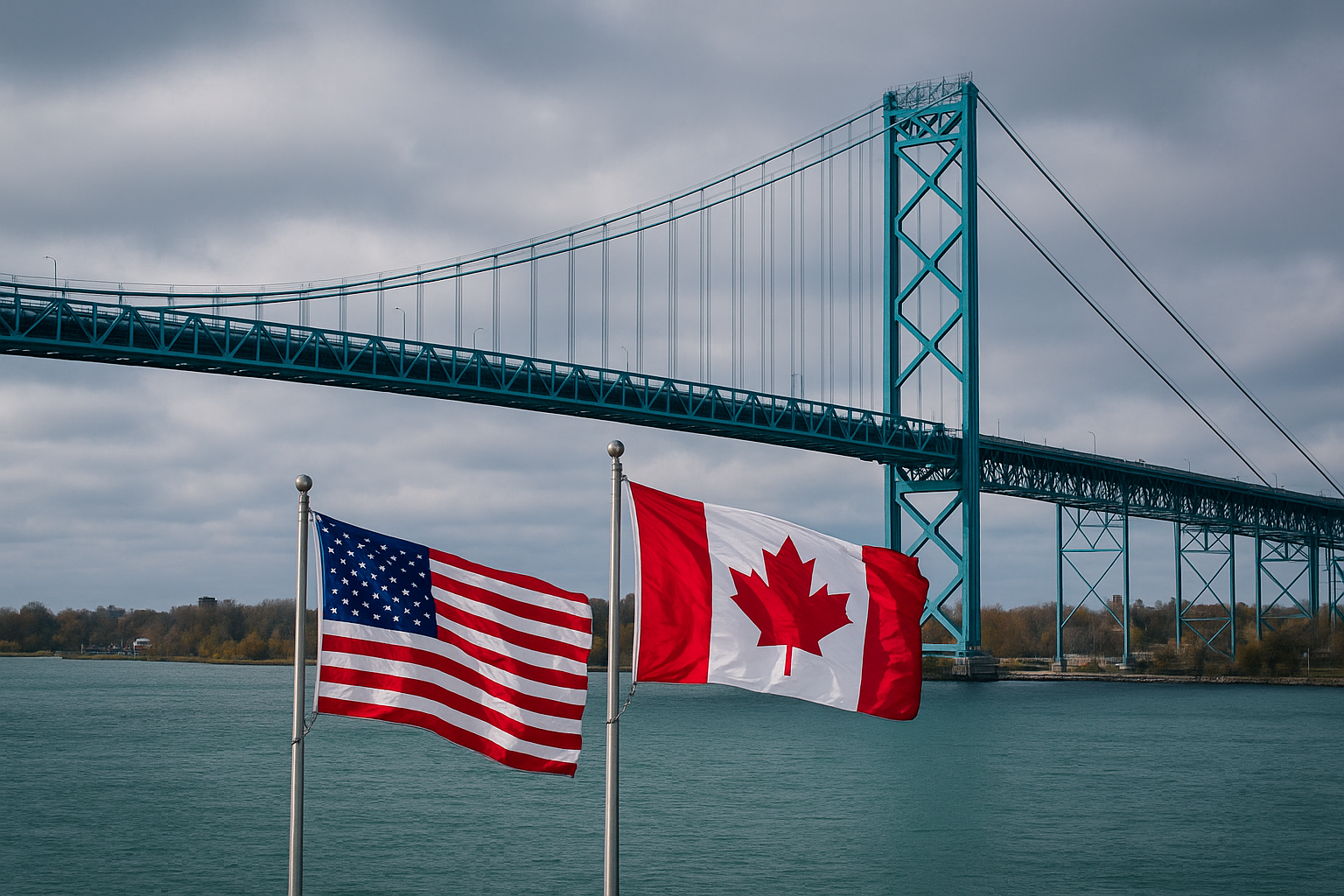A quiet but consequential shift is taking place along North America’s longest border — one that investors can’t afford to overlook. As tariffs harden and cross-border sentiment cools, a new Angus Reid Institute survey reveals a sharp drop in travel between the United States and Canada, especially among frequent crossers. Once a symbol of economic integration and open trade, the U.S.–Canada corridor is showing cracks — with implications that ripple far beyond tourism. For investors, this is a signal that the stability of one of the world’s most integrated trade relationships may be tested in the months ahead.
Economic Chill at the World’s Friendliest Border
According to the Angus Reid Institute, more than 60% of frequent cross-border travellers report reducing their trips this year, citing new tariff uncertainties and a more cumbersome travel experience. Beyond personal inconvenience, the data paints a worrying picture for bilateral trade — a $1.1 trillion relationship that underpins industries from autos to agriculture.
Tariff uncertainty remains a major headwind. Analysts note that renewed discussions around “strategic tariffs” and industrial subsidies — particularly on electric vehicles, energy, and steel — have reignited tensions that echo the trade disputes of the late 2010s. While both governments emphasize cooperation, investors are already recalibrating expectations for supply-chain fluidity and cost efficiency in North America.
Bloomberg reports that U.S. and Canadian trade officials are in early-stage talks to address new tariff alignment concerns following changes in U.S. industrial policy and Ottawa’s green-tech subsidy programs. But the timeline for resolution remains unclear, and border bottlenecks are quietly weighing on logistics firms and exporters.
Why This Matters for Investors
The U.S.–Canada economic partnership is not just symbolic — it’s structural. Nearly 75% of Canada’s exports go to the United States, while the U.S. relies heavily on Canadian energy, metals, and auto components to maintain industrial momentum. Disruptions at this level affect not just bilateral flows, but the broader performance of North American equity sectors tied to trade and infrastructure.
Logistics, automotive, and cross-border retail stocks are among the first to feel the pinch. Freight volumes between Ontario and the U.S. Midwest — a key trade artery — have fallen by nearly 6% year-over-year, according to data from the American Trucking Associations. In parallel, several auto manufacturers with binational supply chains, such as General Motors and Ford, have flagged potential delays and input-cost volatility in recent quarterly updates.
Energy and metals are not immune either. As the U.S. prioritizes domestic resource development — notably adding copper and uranium to its “critical minerals” list this week — Canadian miners face mixed signals. While this could create new export opportunities under joint security frameworks, protectionist sentiment in Washington could equally limit cross-border approvals and investments.
Investor Reactions and Market Sentiment
Equity analysts across Toronto and New York have begun pricing in modest risk premiums for companies with heavy cross-border exposure. CIBC’s latest report highlights that the S&P/TSX Industrials Index is showing increased volatility compared to its U.S. peers, partly due to trade-related uncertainty and fluctuating transport costs.
Meanwhile, logistics companies such as TFI International and Canadian National Railway have seen subdued momentum amid questions about long-term cross-border throughput. Even the Canadian dollar — typically resilient in times of U.S. expansion — has weakened slightly against the greenback as investors anticipate slower export activity.
Reuters notes that small and mid-sized enterprises operating near the border are especially vulnerable. Many depend on just-in-time logistics and could face rising costs or regulatory friction if the current trend continues.
Future Trends to Watch
Several developments could shape this evolving landscape:
- Tariff Talks: Watch for any movement in North American tariff negotiations. Even symbolic tariff relief could unlock positive sentiment for logistics and manufacturing equities.
- Travel & Consumer Sentiment: Declining cross-border travel impacts retail and service industries in border states and provinces. Recovery could boost local economies.
- Energy & Resource Policy: The intersection of Canada’s clean-energy agenda and U.S. industrial policy may produce winners in renewable energy infrastructure, EV supply chains, and critical minerals.
- Currency Moves: Prolonged trade friction could pressure the Canadian dollar, offering potential upside for U.S.-based exporters and investors holding USD assets.
Key Investment Insight
The cooling of U.S.–Canada border relations is not a crisis — yet. But it represents a structural headwind that investors should integrate into their outlook. Companies deeply embedded in cross-border supply chains, such as automakers, logistics firms, and regional banks, may experience short-term margin pressure. Conversely, sectors benefiting from localization — like domestic manufacturing, infrastructure, and digital trade — may see renewed capital inflows.
Investors should consider diversifying within North America, favoring firms with flexible sourcing networks, digital trade exposure, or domestic growth levers insulated from border volatility.
As North America’s two closest allies navigate this cooling period, investors should keep a sharp eye on trade policy headlines and cross-border data releases. Subtle shifts in sentiment today could signal larger structural realignments tomorrow.
Stay informed with MoneyNews.Today for daily insights that connect political developments to market opportunities — helping investors turn uncertainty into strategy.





